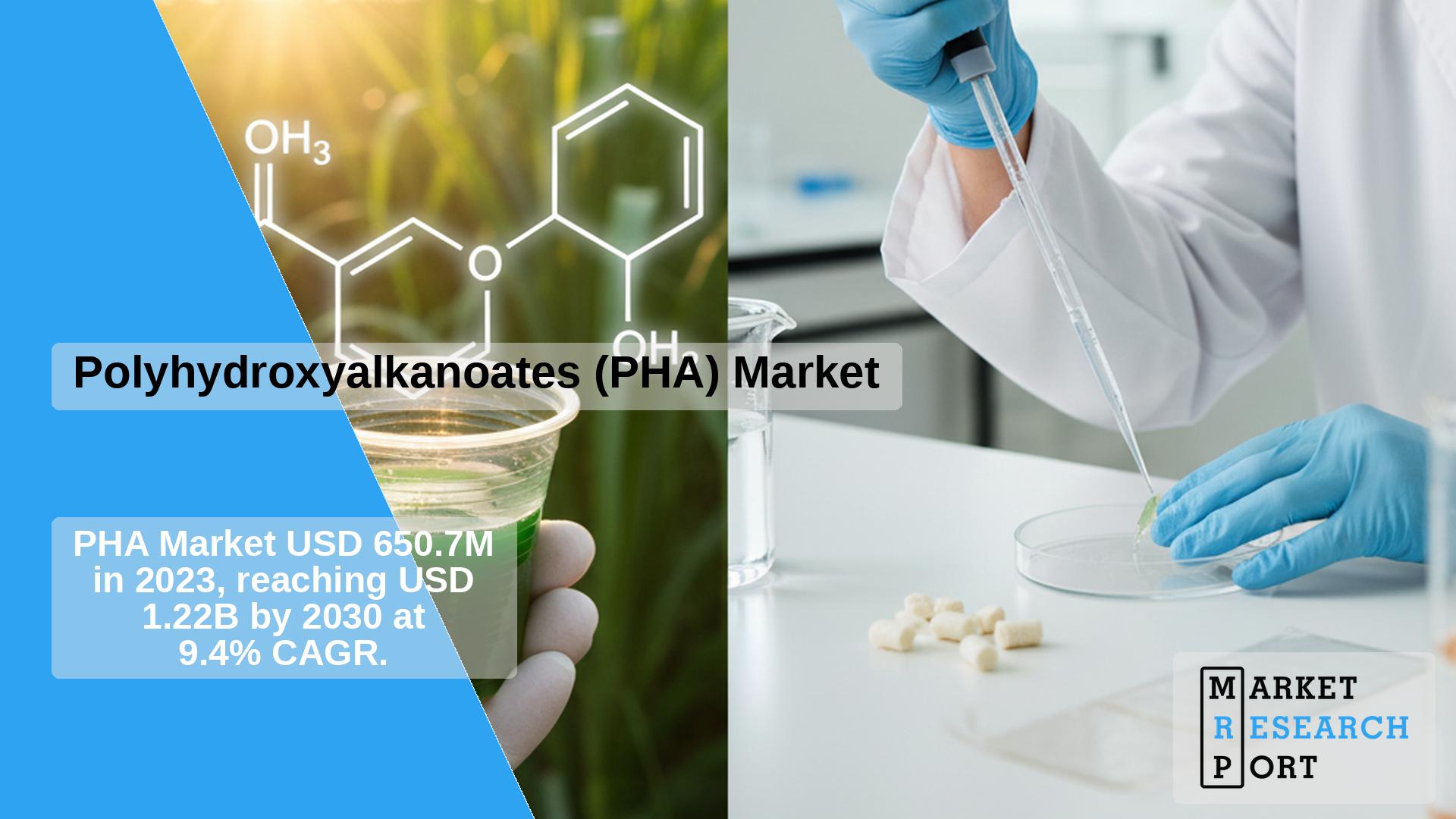
The global polyhydroxyalkanoates (PHA) market was valued at approximately USD 650.7 million in 2023 and is projected to reach USD 1,222.1 million by 2030, growing at a CAGR of 9.4% from 2024 to 2030. The growing environmental concern over non-biodegradable plastic waste is driving the demand for PHAs as a sustainable alternative to manage plastic pollution effectively.
The market growth is fueled by increasing global awareness of plastic pollution and a shift towards sustainable, biodegradable alternatives like PHAs. Government regulations on single-use plastics and investments in improving PHA production efficiency support market expansion. PHAs have found extensive applications in packaging, agriculture, and biomedical sectors as industries adopt greener materials.
Rising demand for biodegradable plastics, driven by regulatory bans on traditional plastics, is a key growth factor. PHAs, being fully biodegradable and sourced from renewables, are favored in packaging and agriculture. Increasing consumer preference for sustainable goods further bolsters demand.
Opportunities exist within the medical field, including tissue engineering and drug delivery, due to PHAs’ biocompatibility and biodegradability. Innovations targeting these segments could present new revenue streams, especially in emerging markets with growing healthcare infrastructure.
However, high production costs associated with microbial fermentation and expensive raw materials limit widespread adoption. Cost competitiveness remains a challenge until technological advances reduce manufacturing expenses or subsidies support market growth.
The short-chain PHAs (SCL-PHA) segment led the market with a 50.16% revenue share in 2023. Their alignment with waste management and circular economy initiatives, being derived from organic and agricultural waste, strengthens their position. Governments and industries prefer these materials for their role in landfill reduction and resource recovery.
The long-chain PHAs (LCL-PHA) segment is poised for significant growth due to its superior flexibility, durability, and thermal resistance. These properties make it attractive for high-performance uses in automotive, medical, and specialty packaging industries, where traditional plastics struggle.
The packaging segment dominated with a 53.77% revenue share in 2023. Rising demand for sustainable packaging, consumer awareness, and regulatory pressures drive this growth. PHAs’ biodegradability and renewable origins make them an ideal alternative to traditional plastics.
The flame retardants segment is expected to grow notably, driven by consumer demand for eco-friendly products in packaging, personal care, and household applications. PHAs provide a sustainable solution, meeting performance and environmental requirements.
North America is anticipated to experience the fastest growth, fueled by corporate sustainability initiatives, regulations, and growing environmental consciousness. Government incentives and R&D investments further support PHA adoption.
The U.S. market benefits from biotechnology advancements and innovation, with strong demand in packaging and medical sectors aligned with sustainability efforts.
Europe, with a 42.6% market share in 2023, is driven by strict regulations and increasing consumer environmental awareness. Countries like Germany focus on bio-based innovation and sustainable materials in various industries.
Asia Pacific’s growth is propelled by rapid industrialization, regulatory push against plastics, and availability of raw materials like agricultural waste. Leading countries include China, India, Japan, and South Korea.
Leading industry participants include Danimer Scientific, TianAn Biologic Materials, Kaneka Corporation, P&G Chemicals, Tepha Inc., Newlight Technologies, Bio-on S.p.A., Yield10 Bioscience, and PHB Industrial.
| Attribute | Details |
|---|---|
| Market Size (2023) | USD 650.7 million |
| Projected Market Size (2030) | USD 1,222.1 million |
| CAGR (2024–2030) | 9.4% |
| Base Year | 2023 |
| Historical Data | 2018–2022 |
| Forecast Period | 2024–2030 |
| Units | Revenue (USD), Volume (Kilotons), CAGR |
| Segments Covered | Type, End-use, Region |
| Regional Scope | North America, Europe, Asia Pacific, Latin America, Middle East & Africa |
| Key Companies | Danimer Scientific, TianAn Biologic Materials, Kaneka Corporation, P&G Chemicals, Tepha Inc. |